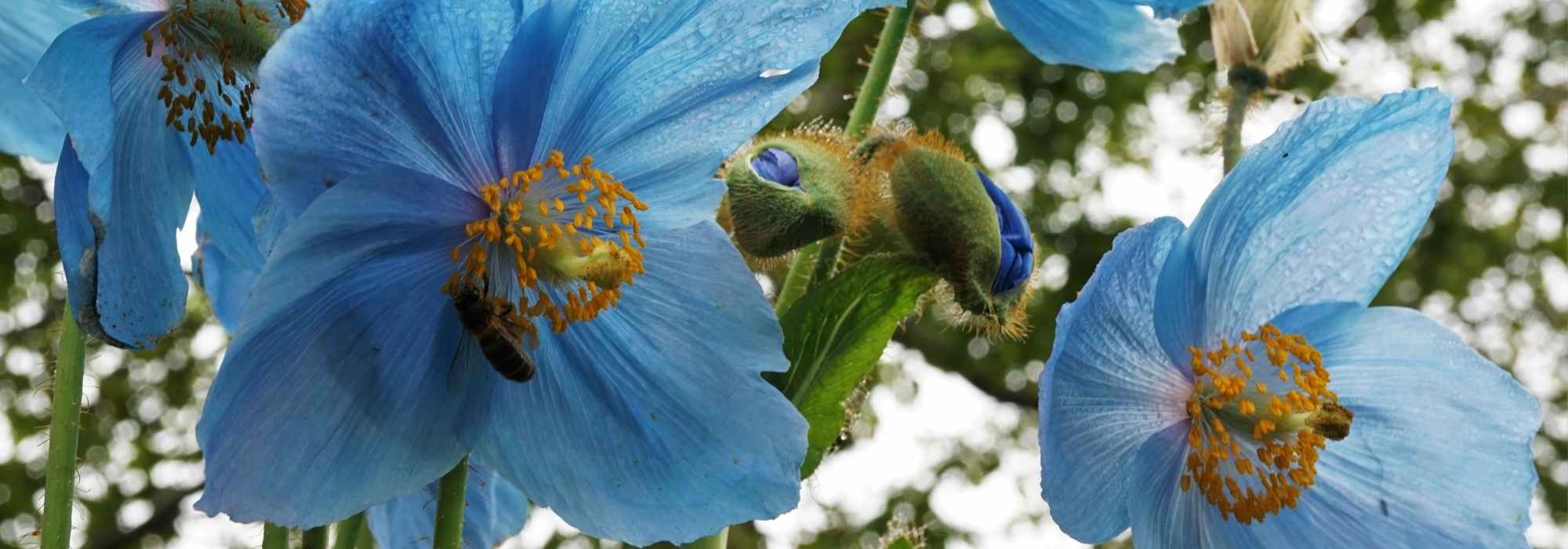
Meconopsis: sowing, growing and care
Contents
Meconopsis in a nutshell
- It is a wonderful perennial plant with poppy-like flowers that forms a more or less dense tuft
- The most mythical is the Himalayan blue poppy, which is among the most beautiful blue flowers in the garden
- The crumpled bristle corollas, sometimes pink, yellow, white, or red, bloom at the end of spring and in summer
- Hardy, it is still a capricious plant whose cultivation is quite delicate in our gardens
- It thrives in humus-bearing, cool soil, in partial shade
A word from our expert
Meconopsis are perennial plants from the Papaveraceae family, notable for their poppy-like flowers, typically blooming from late spring to mid-summer. The most famous of the genus is the Meconopsis betonicifolia, or Himalayan Blue Poppy, with its pure blue flowers. Alongside this mythical poppy, we also find Meconopsis x sheldonii Lingholm, a hybrid that boasts the largest flowers, the sunny Meconopsis cambrica, the Welsh Poppy with its lovely lemon-yellow flowers, and the giant Meconopsis grandis, the tallest and arguably the least demanding and most vigorous of all the Himalayan blue poppies.
Although hardy (-15°C), Meconopsis do not thrive in all climates. Very temperamental, they are difficult and unpredictable to grow if conditions are not to their liking. They prefer shade and coolness. They enjoy our cool, humid summers or regions of moderate altitude, appreciating cold, dry winters and snow. No need to panic: the species we offer are among the easiest to cultivate. Planted in humus-bearing, cool soil, at the edge of woodlands, in dappled light, or at the foot of an east or north-facing wall, they will quickly form flowering clumps with a unique colour. They provide an original alternative to the flowering of classic poppies.
To learn all about their delicate cultivation and to successfully sow blue poppy seeds, check out our guide!
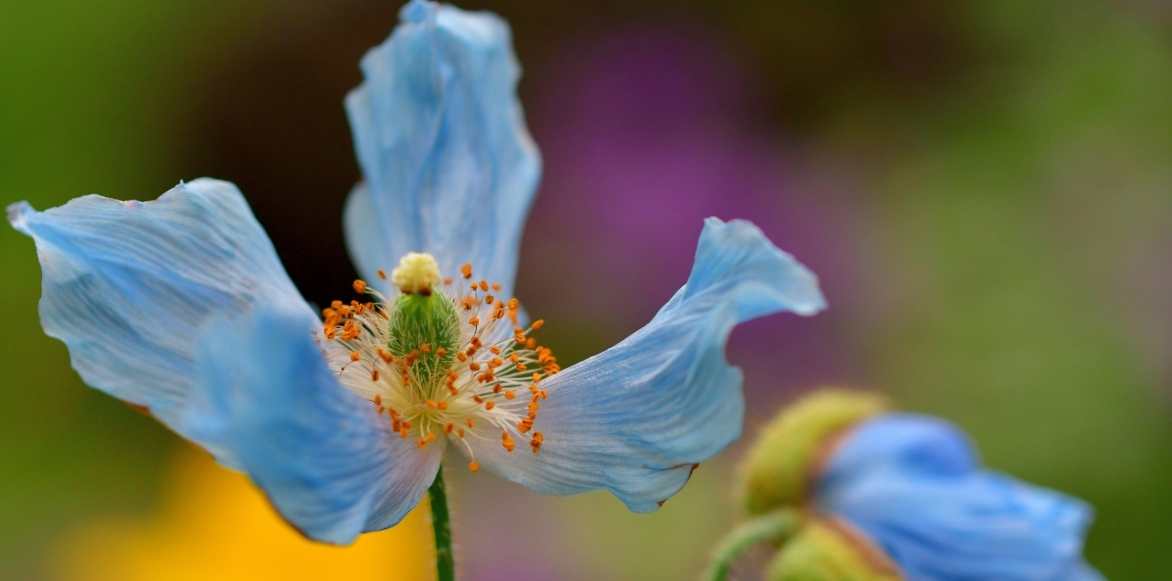
Meconopsis betonicifolia
Description and botany
Botanical data
- Latin name Meconopsis
- Family Papaveraceae
- Common name Himalayan Blue Poppy, Welsh Poppy
- Flowering April to November depending on species
- Height 0.30 to 2 m
- Exposure Partial shade, shade
- Soil type Clay-loamy (rich and light), moist
- Hardiness -15 °C
Meconopsis is a perennial plant from the Papaveraceae family, like poppies, Oriental Poppies, or California Poppies. Of the 50 species in this genus, Meconopsis betonicifolia, or Himalayan Poppy, and its cultivars are the most famous representatives. In cultivation, one also encounters Meconopsis grandis, or Giant Blue Poppy, which is notable for its large size, reaching nearly 1.50 m in height, and Meconopsis napaulensis, which has flowers that can be pink or red. They originate from shaded, moist mountainous areas of the Himalayas, Burma, Tibet, and southwestern China, where they grow at altitudes of 3000 to 4000 metres, except for Meconopsis cambrica, or Welsh Poppy, which comes from mainland Europe.
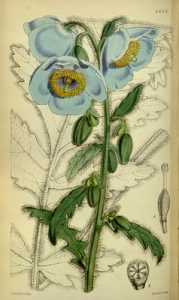
Meconopsis wallichii, Botanical Plate (1852)
From a taproot, the Meconopsis forms a more or less dense tuft rising from 0.40 m to 2 m in height depending on the species. It is a short-lived perennial (generally 4 to 5 years) but self-seeds spontaneously and abundantly if the soil is suitable. The beauty of some semelparous Meconopsis is matched only by their rarity, as they only flower once in their lifetime before dying.
It develops a basal rosette with a diameter of 40 to 50 cm from which leafy stems emerge. These are adorned with deciduous, alternate, oblong or elliptical, pinnatisect leaves, rough in texture, measuring 10 to 30 cm in length. Their colour is light green or bluish-green, and they are sometimes deeply lobed or dentate in certain species, marked by a central vein.
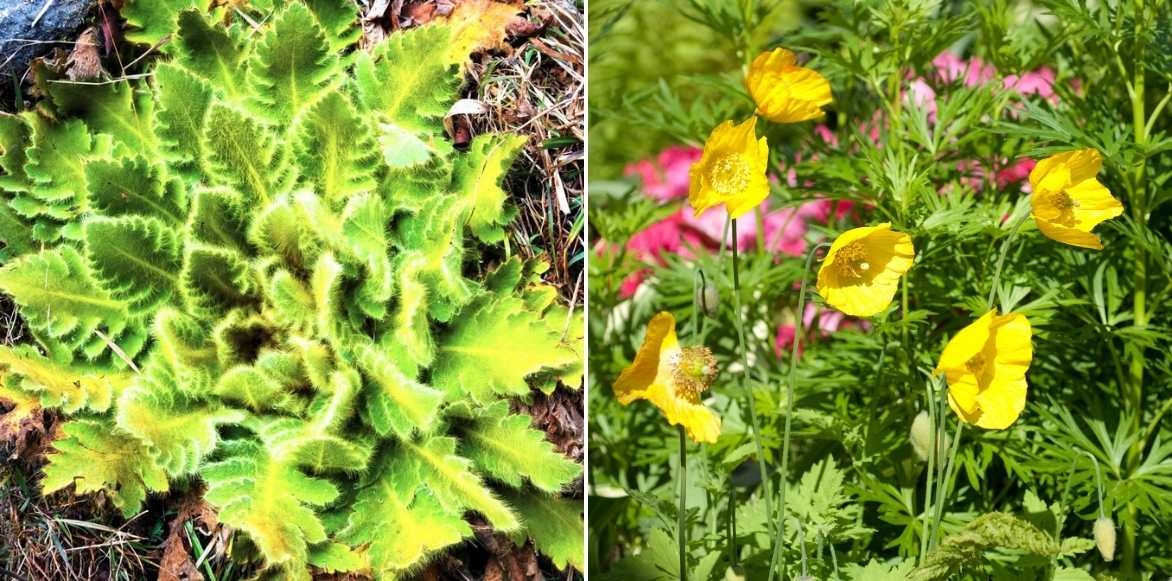
Basal tuft of Meconopsis napaulensis and foliage of Meconopsis cambrica
In spring, the floral spikes rise. The long, elegant, hairy stems are topped in spring and summer with flowers that closely resemble those of poppies. The flowering is generous: it begins in early May, sometimes as early as March, and continues into summer, sometimes until October or even November depending on the species: Meconopsis cambrica flowers almost all year round.
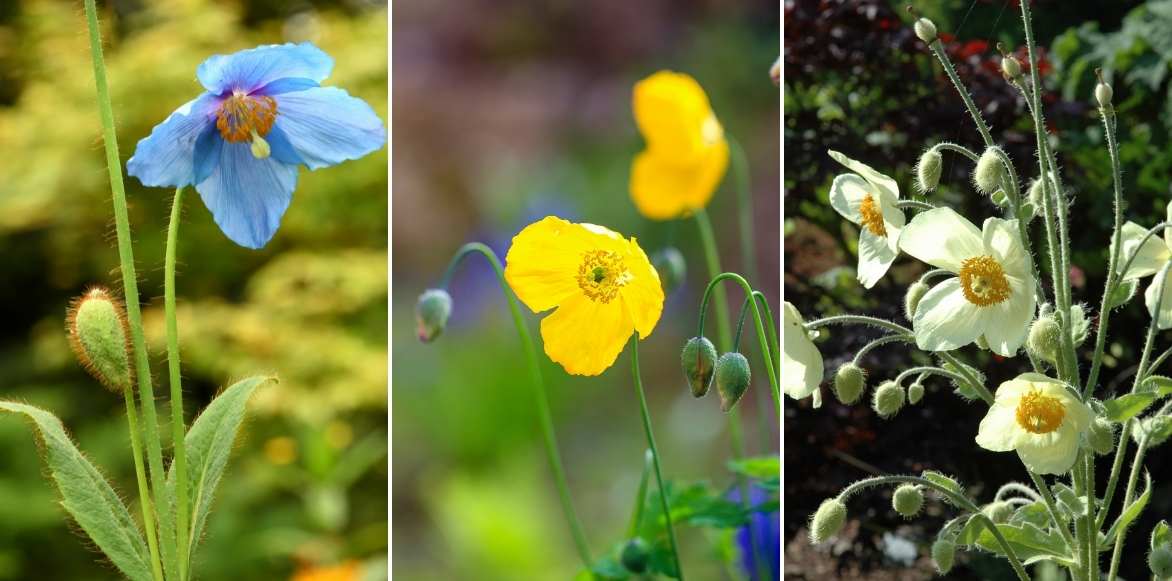
Meconopsis grandis, Meconopsis cambrica, and Meconopsis regia
The flowers are ephemeral and only remain open for a few hours before wilting, but they renew themselves for about 2 weeks. The plant generally flowers in its second or third year before dying.
The floral spikes are branched and quite brittle. Each bears at its tip cup-shaped flowers grouped in racemes. They measure 5 to 15 cm in diameter and consist of 4 to 12 petals with a slightly translucent texture and are borne on long hairy peduncles. Meconopsis x sheldonii ‘Lingholm’ is a hybrid of the Himalayan Blue Poppy distinguished by its large azure flowers, at least 9 cm wide.
These delicately crumpled and satin-like corollas display rare colours in the plant world, ranging from gentian blue often washed with mauve at their base or cobalt blue in the mythical Himalayan Blue Poppy, lemon yellow in the Welsh Poppy, sometimes white in the cultivar ‘Alba’, pink, red, or purple in Meconopsis napaulensis. All feature a white plate-like ovary at their centre surrounded by a bouquet of large golden stamens.
The flowering is followed by the formation of brown capsules containing small black seeds that will promote spontaneous sowing.
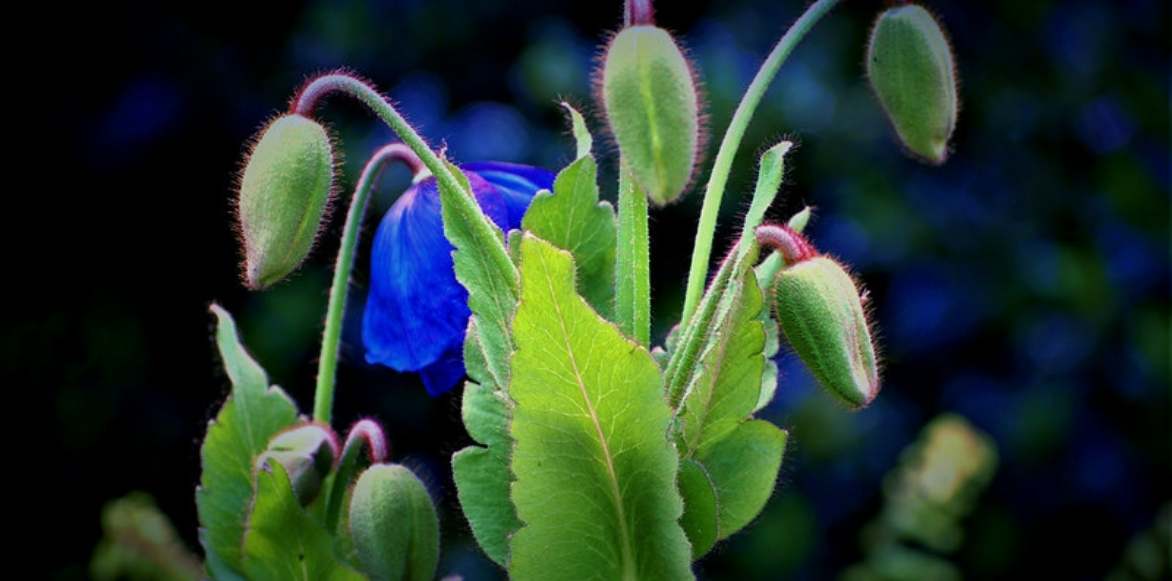
Meconopsis ‘Lingholm’ in buds (© Frank Carman)
Read also
6 annuals or biennials for shadeMain species and varieties
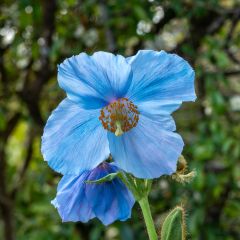
Meconopsis x sheldonii Lingholm - Blue Poppy
- Flowering time June, July
- Height at maturity 1,25 m
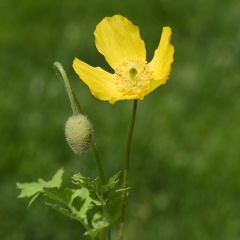
Meconopsis cambrica - Blue Poppy
- Flowering time June to October
- Height at maturity 40 cm
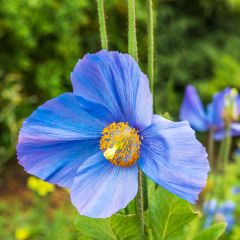
Meconopsis grandis Seeds - Blue Poppy
- Flowering time June, July
- Height at maturity 80 cm
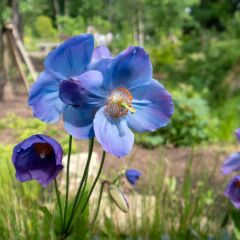
Meconopsis betonicifolia - Blue Poppy
- Flowering time June, July
- Height at maturity 1,20 m
Discover other Meconopsis
View all →Available in 1 sizes
Available in 1 sizes
Available in 2 sizes
Available in 1 sizes
Available in 1 sizes
Available in 1 sizes
Available in 1 sizes
Available in 1 sizes
Available in 1 sizes
Available in 1 sizes
Planting Meconopsis
Where to plant?
The cultivation of blue poppy is quite delicate, but some cultivars are easier to succeed in our gardens, such as Meconopsis x sheldonii ‘Lingholm’. It is a plant suited to cool climates. Meconopsis are generally quite hardy (down to -15°C), not fearing snow or cold, but successfully growing them is not feasible everywhere. They are suited to the climate north of the Loire or in elevated areas. Depending on the species, their soil and climate requirements can vary. All prefer cold, dry winters but are sensitive to drought; their cultivation is not recommended in the south of our country, as they fear heat and warm conditions. In warmer regions, if you wish to attempt their cultivation, favour shade and frequent watering.
Meconopsis betonicifolia and its varieties are less disappointing if grown as annuals or biennials. They thrive in cool, humid summers, such as in our coastal regions or in mid-mountain areas like the Vosges or Jura, which remain quite cool in summer due to altitude.
All Meconopsis are excellent plants for shady gardens as they require a shaded position, without direct sunlight, but with plenty of light. They demand consistently moist soil even in summer, but well-drained to prevent root rot and non-calcareous, preferably acidic. However, keep in mind that cultivation remains difficult and unpredictable if conditions are not to their liking.
Meconopsis cambrica is more accommodating, accepting all soils.
When planted in groups, they add relief and charm to natural gardens, in the midst or at the back of large herbaceous perennial beds, at the edge of woodlands exposed to morning sun, or along a wall facing east or north.
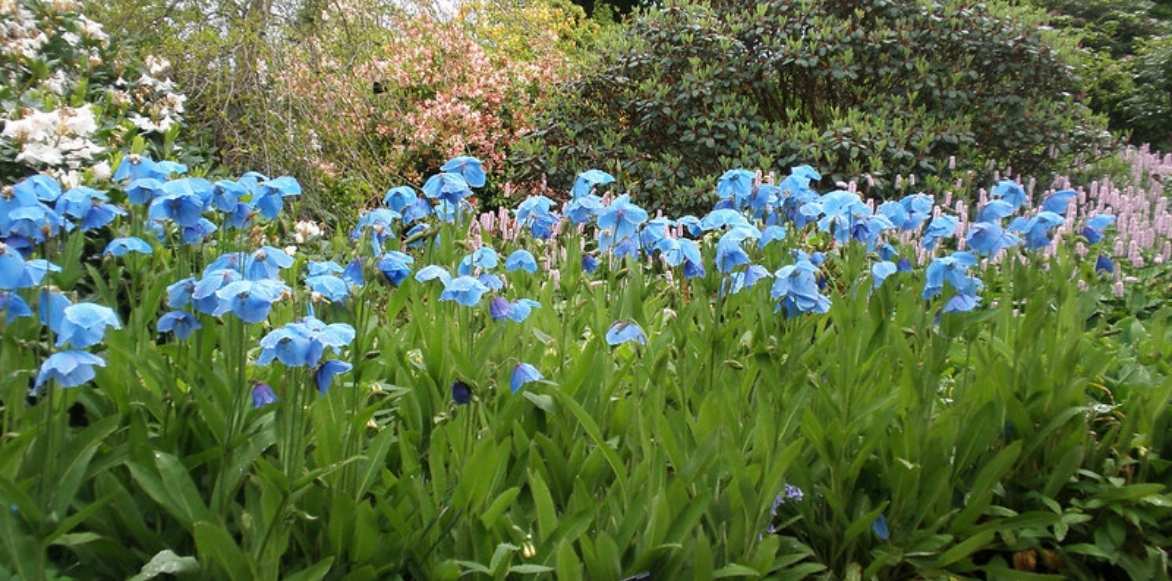
A beautiful mass of Meconopsis in a shaded area (© Amanda Slater)
When to plant Meconopsis?
Our blue poppy pots should preferably be planted in spring after the last frosts, from March to May.
How to plant?
- Plant in a mixture of soil, turf (70%), and sand (30%). Space each plant about 40-50 cm apart.
- Dig a hole 2 to 3 times the volume of the pot.
- Work the soil deeply with a fork.
- Spread gravel or clay balls at the bottom of the hole for good drainage.
- Place the root ball in the centre.
- Backfill with a mixture of garden soil and organic matter.
- Gently firm down and water generously with rainwater.
- Add an organic mulch to keep the soil moist in summer.
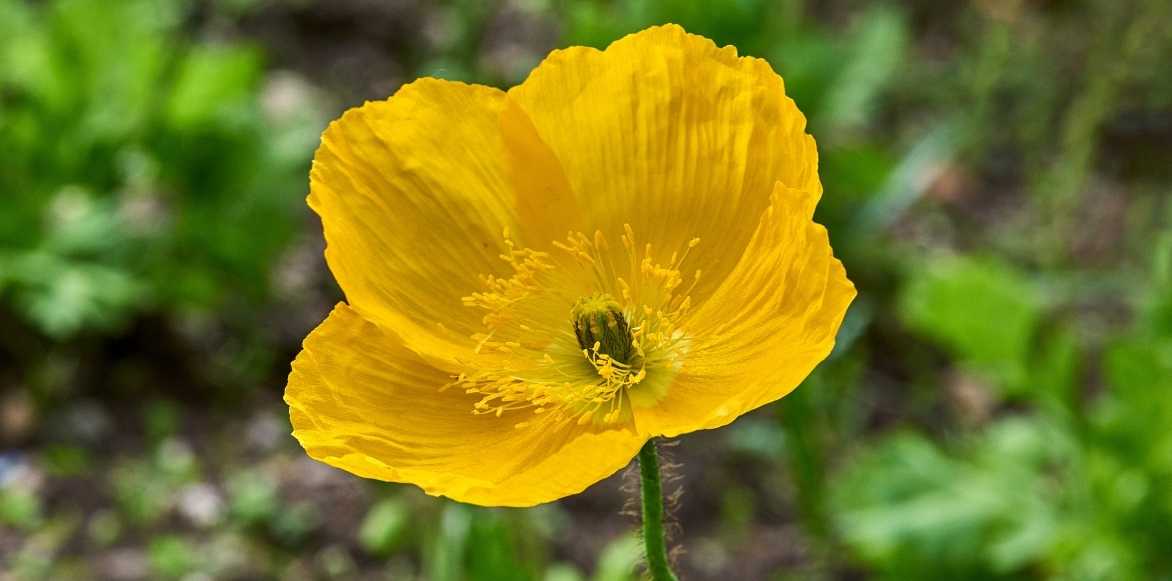 Meconopsis cambrica
Meconopsis cambrica
When and how to sow Meconopsis?
No need to panic: in the first year of cultivation, Meconopsis rarely flowers, especially if the seeds are sown too late. It is not uncommon for the plant to disappear in the third year, which is why it is grown as an annual or biennial.
Sow Meconopsis seeds preferably in spring from January to February or from September to October. Autumn sowings should be kept in a frost-free environment over winter and planted out the following spring; in this case, they will flower in the first year. Direct sowing in situ is very delicate to achieve, so we recommend sowing under cover in early spring.
- Place the seeds in the refrigerator for a month before sowing
- Sow the seeds in pots on the surface of good potting soil or a mix of sand and turf
- Cover them with a very fine layer of the mix
- Lightly press down by hand to ensure they adhere well to the substrate
- Seal the sowings in a transparent plastic bag and place outside in a mini-greenhouse or in a cool spot sheltered from rain
- Keep the substrate moist during germination, which can take 1 to 3 months
- Once they have developed 2 true leaves, place the seedlings in a location at 10-15 °C and water without excess
- When the plants reach 45 cm in height, transplant them into the garden carefully without disturbing the roots
- Water regularly
Growing and care
In the first year after planting, remove faded flowers as they occur to prevent seed formation, which would prematurely exhaust the plant and shorten its lifespan. Keep some seeds to perpetuate the clumps, as the plant does not live long.
Water regularly to encourage flowering, favouring rainwater, as the Meconopsis does not appreciate lime. Keep the soil cool during the warm season by mulching at the base with grass clippings, for example.
Capricious and short-lived, the Meconopsis has no enemies, however. In spring, it is advisable to protect the young foliage from slugs by following our tips to keep gastropods at bay.
Multiplication
Once well established, the roots of Meconopsis do not like to be disturbed, so division is quite delicate. However, you can sow seeds to multiply your young plants, using seeds harvested from the garden or by purchasing them in packets from our shop.
Follow our tips above to successfully sow your Himalayan Blue Poppy seeds.
Pairing ideas
With their silky-petalled corollas and vibrant colours reminiscent of Icelandic poppies, Meconopsis are inspiring perennials that provide remarkable focal points in all the semi-shaded areas of natural gardens, in cool, shaded herbaceous borders, in cottage gardens, or even in fresh rockeries.
Meconopsis are among the most beautiful blues in the garden. Provided their cultural requirements (dappled light, cool to moist, non-calcareous soil) are met, they find their place in blue gardens.
In a woodland setting, blue poppies easily combine with ferns like Japanese Osmunda, the lush tufts of Hakonechloa macra, a carpet of periwinkles, or with other perennials that enjoy similar conditions, such as small saxifrages, an Corydalis ‘Craigton Blue’, Astrances, or heucheras.
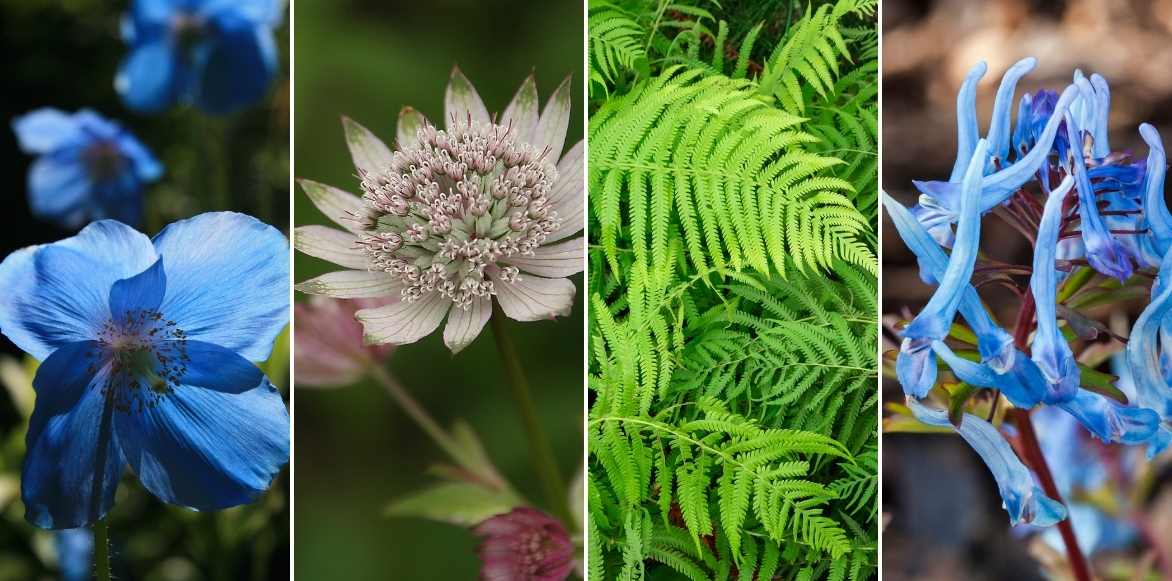
Meconopsis, Astrances, Osmunda regalis, and Corydalis flexuosa
Liriope muscari, Japanese anemones, bleeding hearts, and Japanese primroses are also good companions. Preferring acidic substrates and cool spots, they will bloom at the base of rhododendrons and hostas with blue-green foliage.
You will particularly highlight their blue hues by contrasting them with the yellow blooms of Achemilla alpina or ligularias.
The Meconopsis cambrica with its yellow flowers pairs easily with summer-flowering groundcover perennials such as Campanula portenschlagiana or Geranium cinereum, or with small conifers like Juniperus horizontalis ‘Blue Chips’.
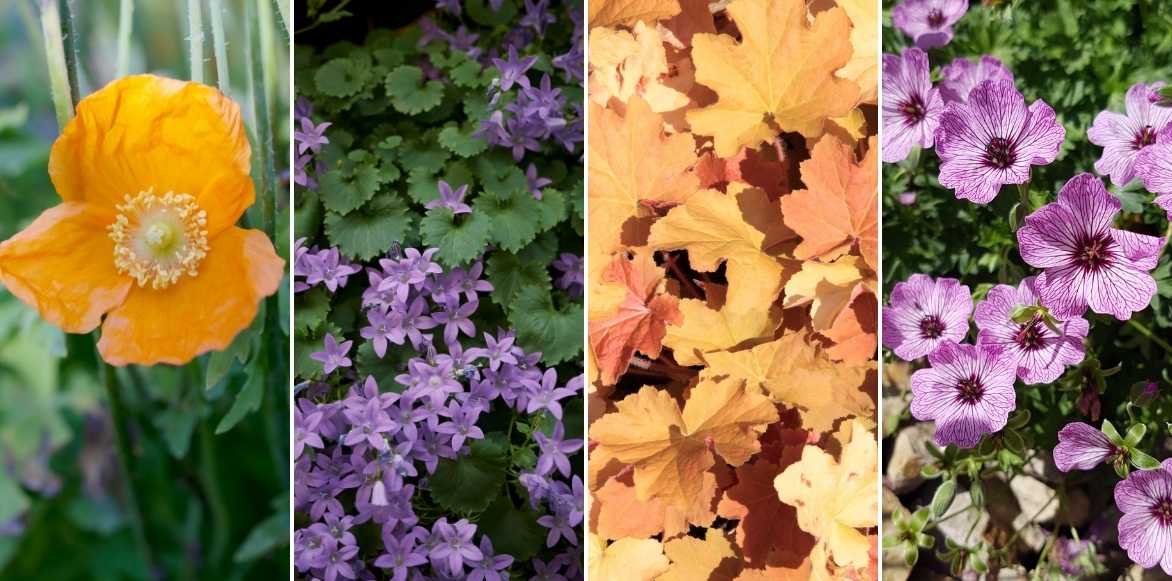
Meconopsis cambrica, Campanula portenschlagiana, Heuchera, and Geranium cinereum ‘Ballerina’
Useful resources
Discover how to create a graphic bed for cool shade
- Subscribe!
- Contents































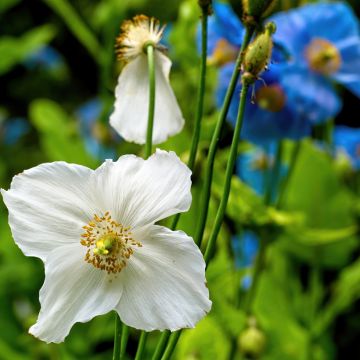


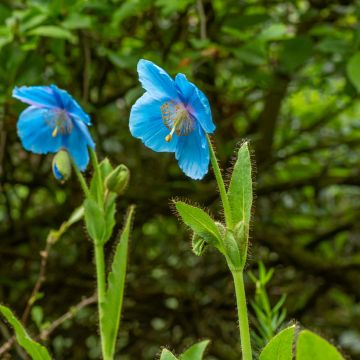

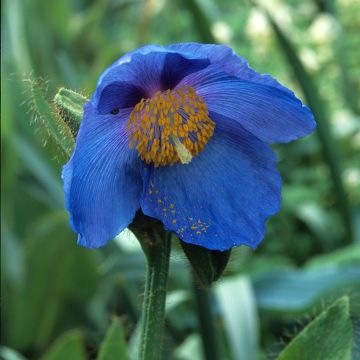

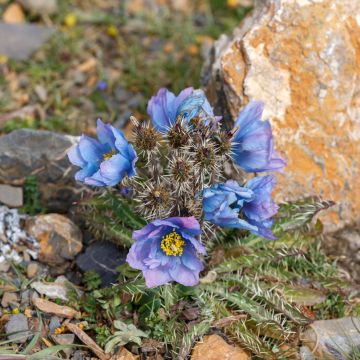
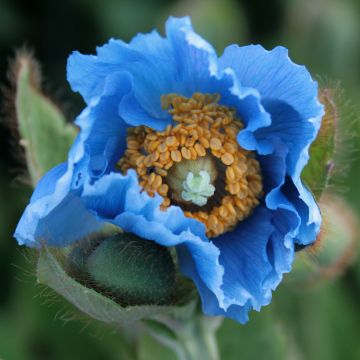
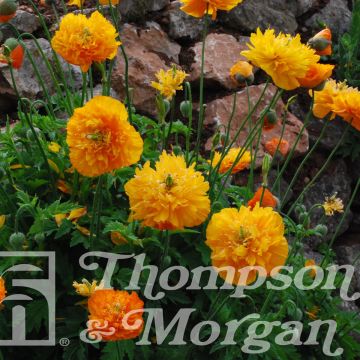
Comments